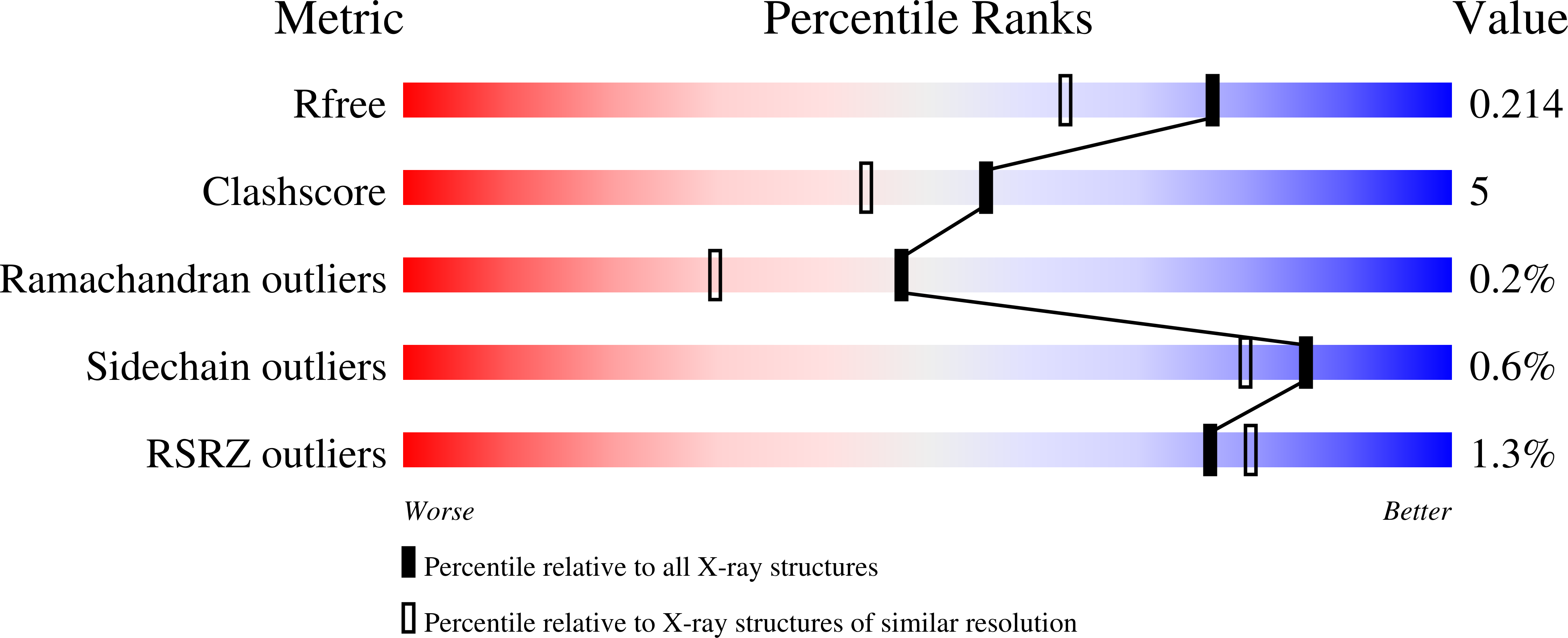Catalytic Dyad in the SGNH Hydrolase Superfamily: In-depth Insight into Structural Parameters Tuning the Catalytic Process of Extracellular Lipase from Streptomyces rimosus.
Lescic Asler, I., Stefanic, Z., Marsavelski, A., Vianello, R., Kojic-Prodic, B.(2017) ACS Chem Biol 12: 1928-1936
- PubMed: 28558229
- DOI: https://doi.org/10.1021/acschembio.6b01140
- Primary Citation of Related Structures:
5MAL - PubMed Abstract:
SrLip is an extracellular enzyme from Streptomyces rimosus (Q93MW7) exhibiting lipase, phospholipase, esterase, thioesterase, and tweenase activities. The structure of SrLip is one of a very few lipases, among the 3D-structures of the SGNH superfamily of hydrolases, structurally characterized by synchrotron diffraction data at 1.75 Å resolution (PDB: 5MAL ). Its crystal structure was determined by molecular replacement using a homology model based on the crystal structure of phospholipase A 1 from Streptomyces albidoflavus (PDB: 4HYQ ). The structure reveals the Rossmann-like 3-layer αβα sandwich fold typical of the SGNH superfamily stabilized by three disulfide bonds. The active site shows a catalytic dyad involving Ser10 and His216 with Ser10-OγH···NεHis216, His216-NδH···O═C-Ser214, and Gly54-NH···Oγ-Ser10 hydrogen bonds essential for the catalysis; the carbonyl oxygen of the Ser214 main chain acts as a hydrogen bond acceptor ensuring the orientation of the His216 imidazole ring suitable for a proton transfer. Molecular dynamics simulations of the apoenzyme and its complex with p-nitrophenyl caprylate were used to probe the positioning of the substrate ester group within the active site and its aliphatic chain within the binding site. Quantum-mechanical calculations at the DFT level revealed the precise molecular mechanism of the SrLip catalytic activity, demonstrating that the overall hydrolysis is a two-step process with acylation as the rate-limiting step associated with the activation free energy of ΔG ⧧ ENZ = 17.9 kcal mol -1 , being in reasonable agreement with the experimental value of 14.5 kcal mol -1 , thus providing strong support in favor of the proposed catalytic mechanism based on a dyad.
Organizational Affiliation:
Division of Physical Chemistry, Rudjer Bošković Institute , Bijenička cesta 54, 10002 Zagreb, Croatia.














